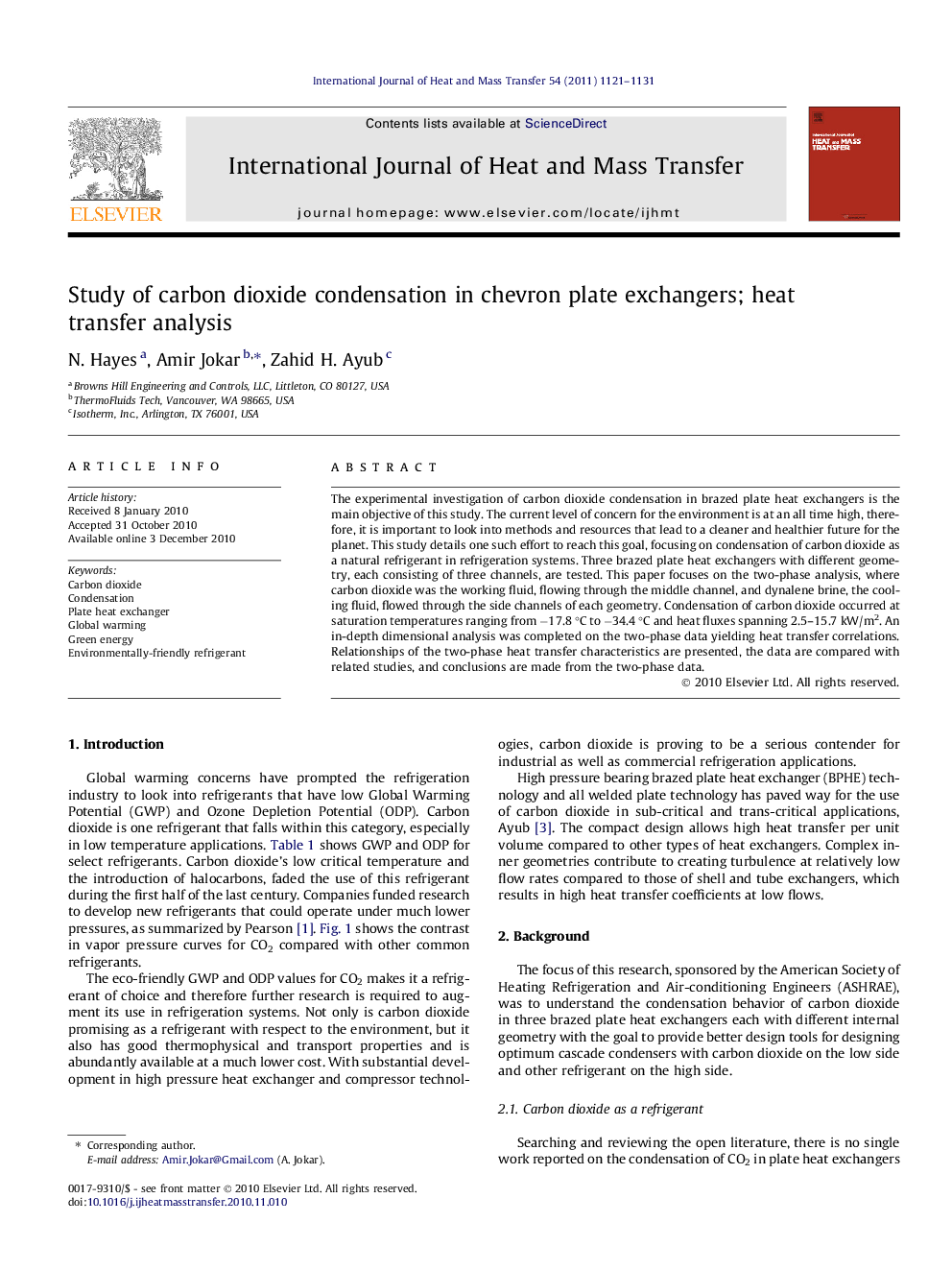| Article ID | Journal | Published Year | Pages | File Type |
|---|---|---|---|---|
| 7059862 | International Journal of Heat and Mass Transfer | 2011 | 11 Pages |
Abstract
The experimental investigation of carbon dioxide condensation in brazed plate heat exchangers is the main objective of this study. The current level of concern for the environment is at an all time high, therefore, it is important to look into methods and resources that lead to a cleaner and healthier future for the planet. This study details one such effort to reach this goal, focusing on condensation of carbon dioxide as a natural refrigerant in refrigeration systems. Three brazed plate heat exchangers with different geometry, each consisting of three channels, are tested. This paper focuses on the two-phase analysis, where carbon dioxide was the working fluid, flowing through the middle channel, and dynalene brine, the cooling fluid, flowed through the side channels of each geometry. Condensation of carbon dioxide occurred at saturation temperatures ranging from â17.8 °C to â34.4 °C and heat fluxes spanning 2.5-15.7 kW/m2. An in-depth dimensional analysis was completed on the two-phase data yielding heat transfer correlations. Relationships of the two-phase heat transfer characteristics are presented, the data are compared with related studies, and conclusions are made from the two-phase data.
Related Topics
Physical Sciences and Engineering
Chemical Engineering
Fluid Flow and Transfer Processes
Authors
N. Hayes, Amir Jokar, Zahid H. Ayub,
